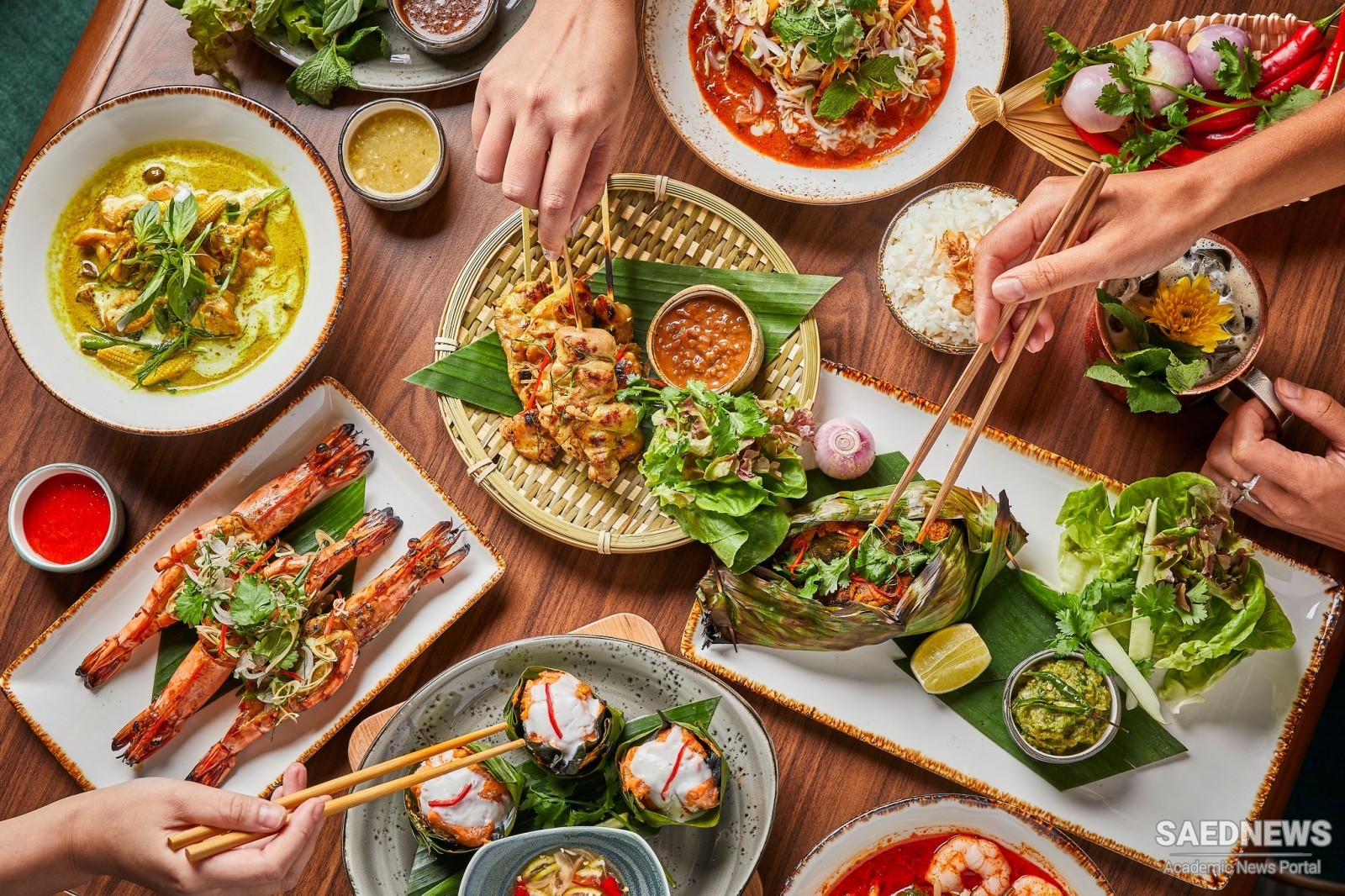Using the serving spoon supplied with each dish, take a spoonful on to the edge of the rice on your plate in whatever order you prefer, but do not pile everything on at once. The Thai, Vietnamese, Lao and Cambodian practice is to take a spoonful of a single dish at a time, each to be savoured separately, with the host or hostess watchfully passing new ones to try. This is the general pattern adopted for modern Indonesian and Malay meals as well. There, however, it has been a practice traditionally for ‘complete’ ritual meals to be served from time to time, which consist of a title dish together with accompaniments that customarily go with it. They are then all arranged around the edge of the rice on a single plate.
The individual flavourings in South East Asian dishes never lend themselves to precise measurement, but are the result of each particular cook’s artistry. Not everyone reacts to a particular flavour or combination of flavours in the same way, and some people will be happier with one rather than another. The same ingredients, moreover, can vary in taste according to size, age and quality. For South East Asians there is no such thing as a ‘correct’ amount of any additive in cooking: everything is worked out through tasting and adjusting according both to the nature of the ingredients they are using and personal preference. There may be a general expectation about striking a balance between, for example, sweetness, saltiness, sourness and/or chilli heat, but the specific amounts and proportions that are used will always be the result of a cook’s own judgement.

South East Asians, it must be remembered, are first and foremost rice eaters. It is the plate of rice that is the meal; other dishes on the table are there to add interest to the rice but not to dominate it. The way non-Asians approach rice is quite different. Our habit is to treat it as an accompaniment to meat, fish or vegetable dishes, and we view the latter as the core of the meal. Try though we might, this is the practice our culture constantly leads us to adopt. While it is perfectly acceptable to proceed in this way, there is an important consequence of which every Western cook should be aware: it is that the flavouring of food as cooked and eaten in South East Asia may often be too strong when the food is eaten in a Western way. If you do not adopt the rice-based approach of South East Asians, you may wish, sometimes, to adjust flavourings to your own style.


 Jewish Contribution to Italian Cuisine: coda di bue and pagliata con pomodoro
Jewish Contribution to Italian Cuisine: coda di bue and pagliata con pomodoro














































